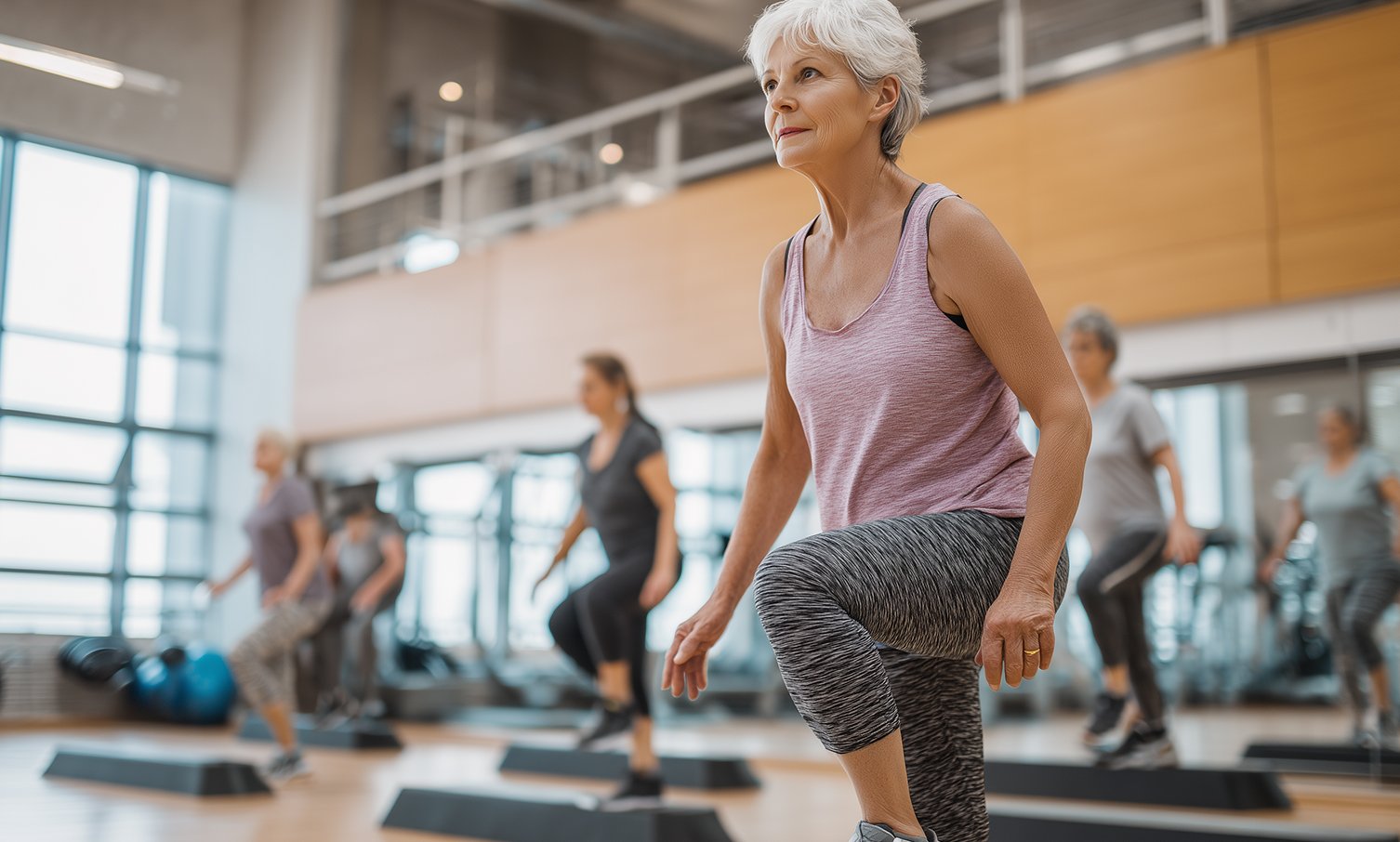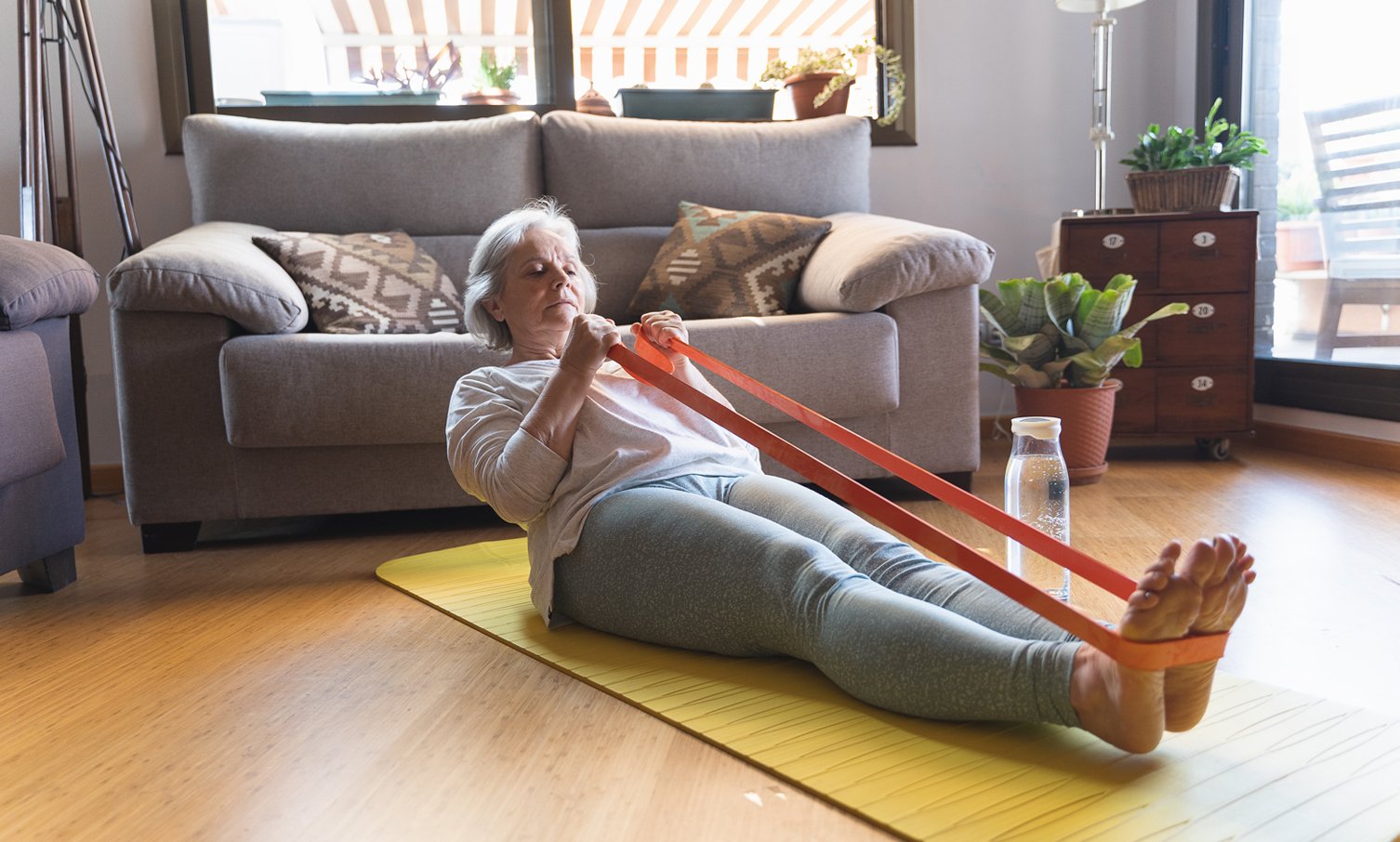Stronger Hearts After 40: How Exercise Shields You During Menopause
Reading time 7 min

Reading time 7 min

“I always thought heart disease was something that happened to other people: those who have bad genes, or mostly men.” It’s a dangerous myth that many women believe.
Heart disease kills more women each year than all forms of cancer combined, and 1 in 3 women dies from cardiovascular disease1. This stage of life marks a critical turning point for our heart health, but exercise for heart health during menopause is one of the most powerful tools we have in this fight.
What’s the best way to protect your heart during menopause?
Exercise. It lowers blood pressure, reduces cholesterol, and improves circulation. Even short workouts can slow menopause-related cardiovascular changes and cut your risk of heart disease.
Your cardiovascular system undergoes profound changes during menopause, and it’s not just about hot flashes disrupting your sleep (though that doesn’t help). When estrogen levels decrease during menopause transition, its protective effect vanishes.
“Heart disease is the leading cause of death in both men and women, but women’s cardiovascular risk has traditionally been undertreated because women tend to develop heart disease at an older age than men.”
The changes happen fast: your cardiovascular risk can rise sharply after you go through menopause, and you can quickly catch up to men of a similar age and health profile2.
While we can’t stop estrogen from declining, exercise can powerfully protect our hearts. The evidence is compelling: a landmark study, Women’s Healthy Lifestyle Project (WHLP), demonstrated that lifestyle changes can directly affect LDL cholesterol levels.
Over five years, women aged 44–50 who adopted a lower-cholesterol diet, increased physical activity, and received cognitive-behavioral support significantly reduced typical menopause-related increases in LDL cholesterol4.
Aerobic exercise is anything that gets your heart pumping and makes you breathe harder. When you engage in regular aerobic exercise, your heart becomes a more efficient pump. It grows slightly larger and stronger, allowing it to push more blood with each beat.
Your blood vessels also become more flexible—think of them going from rigid pipes to elastic tubes that can expand and contract as needed5.

Emerging research suggests that High-Intensity Interval Training (HIIT) may be particularly beneficial for women during menopause transition. Short bursts of intense effort (30 seconds or less) followed by recovery periods (30 sec–5 min) can improve insulin sensitivity, blood sugar control, and cardiovascular function more efficiently than regular cardio.
A meta-analysis found that HIIT significantly reduces abdominal fat and improves body composition in women. The key is balance: 1-2 HIIT sessions per week work well, but overdoing it (especially if you’re not sleeping well) can backfire, leading to exhaustion and joint pain. Listen to your body and remember that with HIIT, less is often more6, 7.
If cardio is the star of heart health, resistance training is the powerful supporting actor that deserves more recognition. Resistance training involves exercises like weightlifting or using resistance bands to build muscle strength.
It not only improves or maintains muscle mass and strength but also positively impacts heart health in ways different from aerobic exercise8.

Resistance training boosts your fitness by increasing muscle strength, enhancing how efficiently your muscles use oxygen, and building muscle fibers (Type II) that support power and endurance. Additionally, it helps combat muscle loss (sarcopenia) that accelerates after menopause, maintaining your metabolic rate, improving insulin sensitivity, achieving better blood pressure control, and reducing visceral fat.
Incorporate resistance training two to three times weekly, targeting major muscle groups—legs, arms, back, chest, and core—to ensure comprehensive cardiovascular and muscular support9, 10.
Did you know? Regular aerobic exercise can lower your resting heart rate, meaning your heart works better and more efficiently12.
Women who experience natural menopause at a later age have a lower risk of cardiovascular disease and death, suggesting that the earlier menopause hits, the more vigilant we need to be about heart protection11.
I won’t pretend that I bounce out of bed excited for my morning workout. It’s not about achieving some ideal body or competing with my younger self.
It’s about showing up for Future Me—the woman who wants to travel without worrying about her stamina, who wants to chase grandkids around the park, who refuses to let heart disease statistics define her story.
Some weeks, resistance training means doing bodyweight squats during Zoom calls with the camera off. The perfect exercise plan is the one you actually do, not the one gathering dust in your journal. I know that every workout is a deposit in my cardiovascular bank account. Remember, your heart has carried you through every moment of your life so far. Now it’s time to return the favor. Start today, start small, but start!
Dr. Jūra Lašas
1.
Janikowski, K. et al. Menopause and women’s cardiovascular health: is it really an obvious relationship? (2022) https://doi.org/10.5114/aoms/157308
2.
Gupta, V. et al. Menopause and Cardiovascular Disease. (2019) https://doi.org/10.4103/0976-7800.261983
3.
Uddenberg, E. et al. Menopause transition and cardiovascular disease risk. (2024) https://doi.org/10.1016/j.maturitas.2024.107974
4.
Kuller, L. et al. Women’s Healthy Lifestyle Project: A randomized clinical trial: results at 54 months. (2001) https://doi.org/10.1161/01.cir.103.1.32
5.
MacDonald, M. et al. The effects of aerobic exercise on cardiometabolic health in postmenopausal females: A systematic review and meta-analysis of randomized controlled trials. (2024) https://doi.org/10.1177/17455057241290889
6.
Leinum, M. et al. Aerobic High-Intensity Exercise Training Improves Cardiovascular Health in Older Post-menopausal Women. (2021) https://doi.org/10.3389/fragi.2021.667519
7.
Iancu, H. et al. Comparison of performance and health indicators between perimenopausal and postmenopausal obese women: the effect of high-intensity interval training (HIIT). (2020) https://doi.org/10.1097/GME.0000000000001654
8.
Lee, D. et al. Resistance training improves cardiovascular health in postmenopausal women. (2016) https://doi.org/10.1097/GME.0000000000000758
9.
Nascimento, M. et al. Cardiovascular Adaptations to Resistance Training in Elderly Postmenopausal Women. (2013) https://doi.org/10.1055/s-0032-1331185
10.
Singh, F. et al. The effect of progressive resistance training on aerobic fitness and strength in adults with coronary heart disease: A systematic review and meta-analysis of randomised controlled trials. (2017) https://doi.org/10.1177/2047487317713329
11.
Uddenberg, E. et al. Menopause transition and cardiovascular disease risk. (2024) https://doi.org/10.1016/j.maturitas.2024.107974
12.
MacDonald, M. et al. The effects of aerobic exercise on cardiometabolic health in postmenopausal females: A systematic review and meta-analysis of randomized controlled trials. (2024) https://doi.org/10.1177/17455057241290889